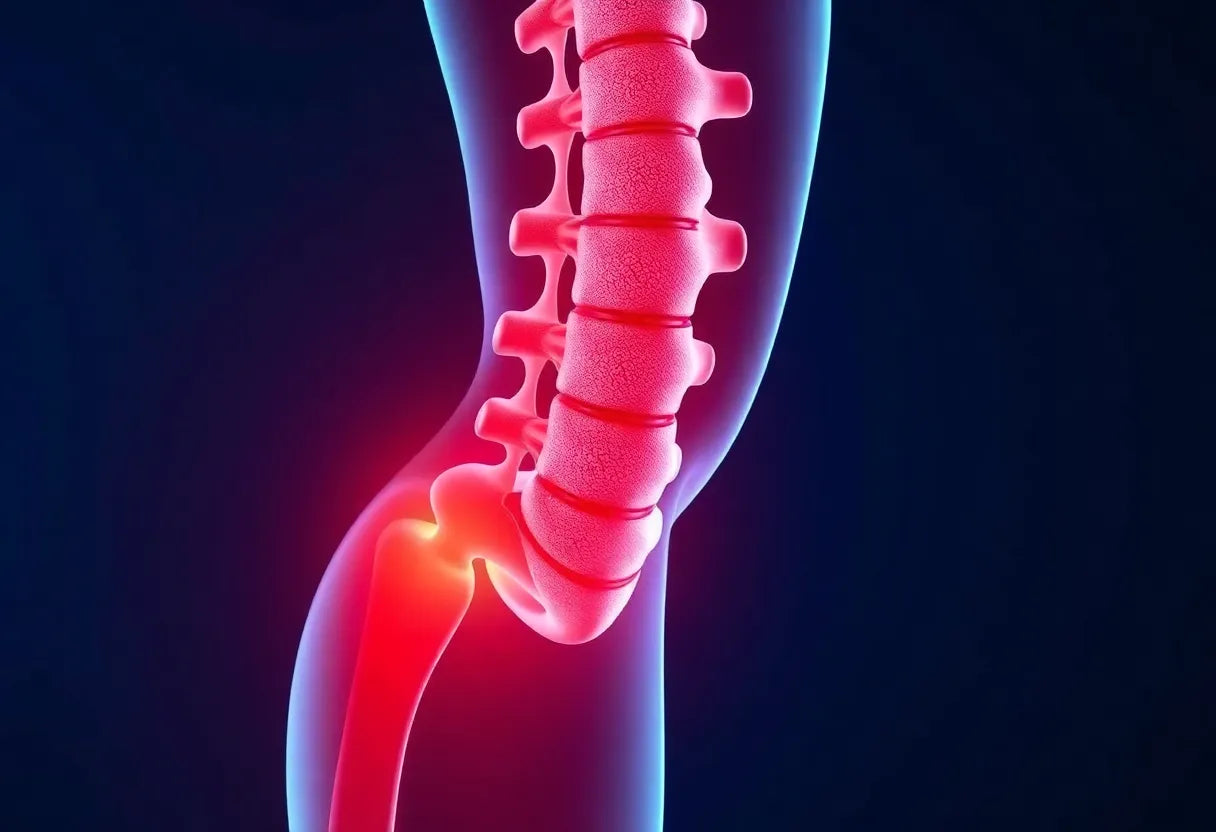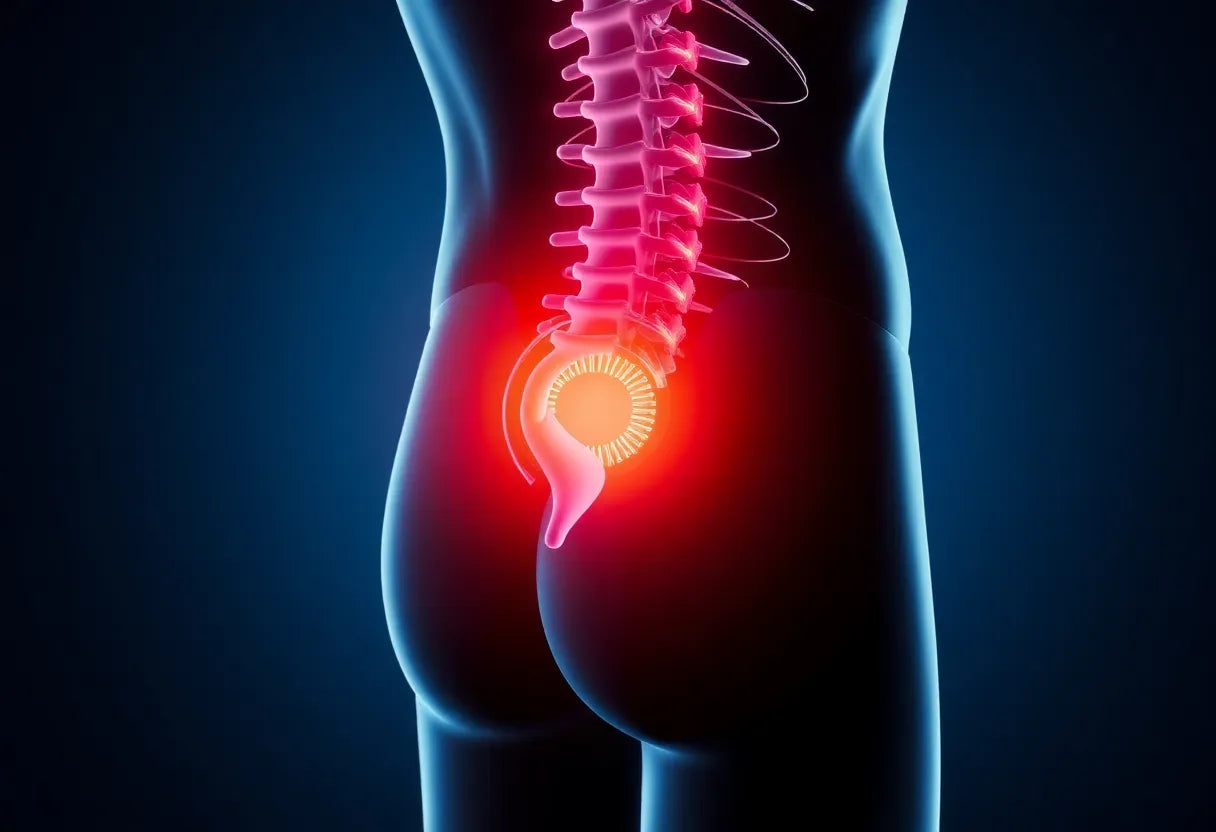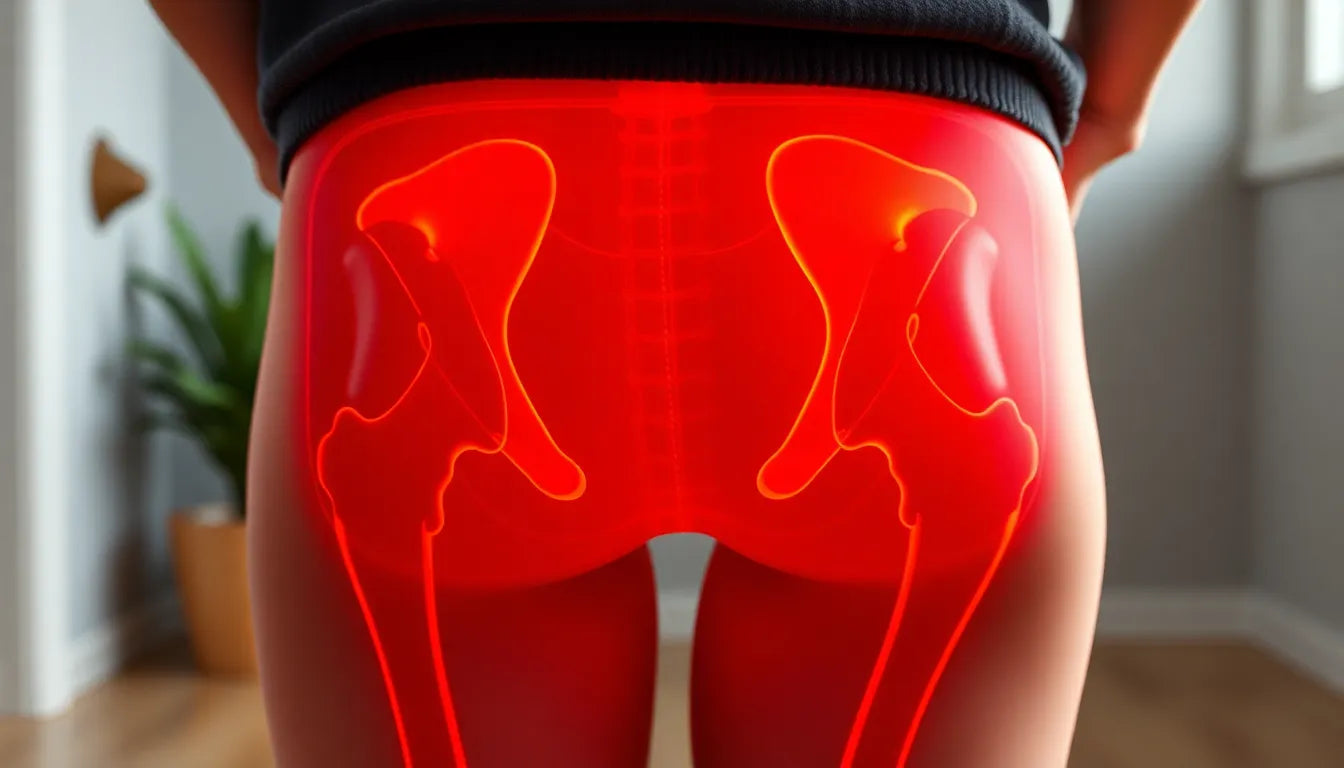Leg weakness can be a distressing and debilitating symptom for individuals suffering from a herniated disc. This condition not only affects mobility but also significantly impacts the quality of life. Understanding the connection between a herniated disc and leg weakness is crucial for managing this condition effectively. Herniated discs are a common spinal issue, often leading to neurological symptoms, including leg weakness, which can range from mild discomfort to severe impairment.
understanding herniated discs and their impact on leg strength
A herniated disc occurs when the soft, gel-like center of a spinal disc pushes through a crack in the tougher exterior casing. This can happen anywhere along the spine but is most common in the lower back (lumbar spine). When a disc herniates, it can press against nearby spinal nerves, leading to symptoms such as pain, numbness, tingling, and notably, leg weakness. The extent of leg weakness depends on the severity of the nerve compression and the specific nerves affected.
Leg weakness from a herniated disc is a sign that the disc material is impinging on the nerves that control leg muscles. This can make it difficult to walk, climb stairs, or perform everyday activities. Recognizing the severity and implications of leg weakness in the context of a herniated disc is essential for timely and effective management.
the importance of early recognition and management
Timely recognition of leg weakness due to a herniated disc is vital to prevent further complications. If left untreated, the condition can lead to permanent nerve damage, resulting in chronic pain or even paralysis in severe cases. Therefore, it is crucial to seek medical advice as soon as symptoms arise. Early diagnosis and intervention can help manage symptoms effectively and reduce the risk of long-term damage.
In conclusion, understanding the relationship between a herniated disc and leg weakness is the first step in addressing this condition. By recognizing the symptoms early and seeking appropriate medical advice, individuals can take proactive steps to manage their condition, prevent complications, and improve their quality of life. In the next sections, we will delve deeper into the causes and symptoms of leg weakness from a herniated disc, explore treatment options, and discuss when surgical intervention might be necessary.
causes and symptoms of leg weakness from a herniated disc
Leg weakness associated with a herniated disc primarily results from the compression or irritation of nerves in the lumbar spine. This compression can interfere with the nerve signals that control muscle movement, leading to weakness in the legs. Alongside weakness, individuals may experience other neurological symptoms such as sciatica, which is characterized by pain radiating down the leg, as well as numbness and tingling sensations. These symptoms can vary greatly in intensity, ranging from mild discomfort to debilitating pain, and their duration can also differ from person to person.

Lumbar support belt
Giver stabilitet og lindring til lænden ved diskusprolaps og bensmerter.
The severity of leg weakness can provide insight into the extent of nerve involvement. Mild to moderate weakness might be manageable with conservative treatments, while severe or progressive weakness could indicate significant nerve compression that requires urgent medical attention. Recognizing these symptoms early is crucial for effective management and to prevent further complications.
severity and urgency of leg weakness
Understanding the severity of leg weakness is essential for determining the appropriate course of action. Mild to moderate weakness often responds well to conservative treatments such as physical therapy, medications, and lifestyle modifications. However, progressive or severe weakness, especially when accompanied by red flags like bowel or bladder dysfunction or saddle anesthesia, may indicate serious nerve compression, such as cauda equina syndrome, which necessitates immediate medical intervention.
These red flags are critical indicators that warrant urgent medical evaluation and potentially surgical intervention to prevent permanent damage. Therefore, it is important for individuals experiencing these symptoms to seek prompt medical attention to ensure timely and effective treatment.
conservative treatment options for leg weakness
For most individuals with leg weakness due to a herniated disc, conservative treatment options are the first line of management. These include activity modification to avoid movements that exacerbate symptoms, and engaging in physical therapy to strengthen muscles and improve mobility. Medications such as nonsteroidal anti-inflammatory drugs (NSAIDs), neuropathic agents, and muscle relaxants can also help manage pain and inflammation.

Women's Posture Shirt™ - Black
Aktiverer musklerne og kan lindre smerter samt øge kropsbevidstheden.
In some cases, epidural steroid injections may be recommended to provide relief from severe pain by reducing inflammation around the affected nerves. It is important to note that total bed rest is discouraged, as gentle movement can aid recovery and help maintain muscle strength. Encouraging gentle activity within comfort limits is crucial for effective rehabilitation.
considering surgical intervention
While conservative treatments are effective for many, there are scenarios where surgical intervention becomes necessary. Surgery may be considered if leg weakness persists despite several weeks of conservative management, or if there is significant neurological impairment. Surgical options, such as a discectomy, are aimed at relieving nerve compression and restoring normal function.
These procedures can offer significant benefits, including pain relief and improved mobility. However, the decision to undergo surgery should be made in consultation with a healthcare professional, taking into account the severity of symptoms, overall health, and personal preferences. It is essential to weigh the potential risks and benefits to make an informed decision.
recovery and prognosis for leg weakness from a herniated disc
Recovery from leg weakness due to a herniated disc varies significantly among individuals, influenced by factors such as the severity of the nerve compression, the patient's overall health, and adherence to treatment protocols. Typically, with appropriate management, many individuals experience improvement within a few weeks to months. Conservative treatments like physical therapy play a crucial role in strengthening the muscles and enhancing mobility, which can expedite recovery.
Long-term prognosis largely depends on the timely recognition and treatment of symptoms. While most people recover without the need for surgery, ongoing management and lifestyle adjustments are essential to prevent recurrence. Maintaining a healthy weight, practicing good posture, and engaging in regular exercise can help support spinal health and reduce the risk of future herniations.
patient perspectives and practical tips
Incorporating patient experiences can provide valuable insights into the journey of recovery from leg weakness caused by a herniated disc. Many individuals find that sharing their stories and coping strategies can offer encouragement and practical advice to others facing similar challenges. Testimonials often highlight the importance of patience and persistence in following treatment plans.
Practical tips for daily living adaptations include using ergonomic furniture to support the spine, employing assistive devices if necessary, and incorporating regular stretching exercises into daily routines. These adjustments can significantly enhance comfort and aid in the recovery process. Additionally, staying informed about the condition and actively participating in one's care plan can empower patients to take control of their recovery journey.
frequently asked questions
Can you walk with a herniated disc?
Yes, in most cases, walking is encouraged as it promotes gentle movement and can aid recovery, but it should be done within comfort limits.
How long does leg weakness last with a herniated disc?
Leg weakness can vary in duration, typically improving within a few weeks with appropriate management, but persistent weakness should be evaluated by a healthcare professional.
What are the signs that leg weakness is an emergency?
Seek immediate medical attention if leg weakness is accompanied by severe pain, bowel/bladder dysfunction, or saddle anesthesia.
What can I do at home to manage leg weakness from a herniated disc?
Follow a physical therapy regimen, use ergonomic aids, maintain an active lifestyle within comfort limits, and manage pain with prescribed medications.
When should I see a doctor for leg weakness?
Consult a doctor if leg weakness is severe, progressive, or accompanied by other worrying symptoms, to rule out serious conditions like cauda equina syndrome.
Källor
- Chou, R. (2016). "Subacute and Chronic Low Back Pain: Noninvasive Treatments." NCBI Bookshelf.
- NeoSpine. "Leg Pain and Weakness: Understanding the Causes and Treatments."
- University of Maryland Medical Center. "Lumbar Herniated Disc: A Patient Guide."
- Spine Together. (2023). "Herniated Disc and Walking Problems."
- Penn Medicine. "Herniated Disc Disorders: Symptoms and Treatment Options."
- Mayo Clinic. "Herniated Disk: Symptoms and Causes."
- Core Orthopedics. "5 Unexpected Symptoms of a Herniated Disc."
- Cleveland Clinic. "Herniated Disk: Overview and Management."























